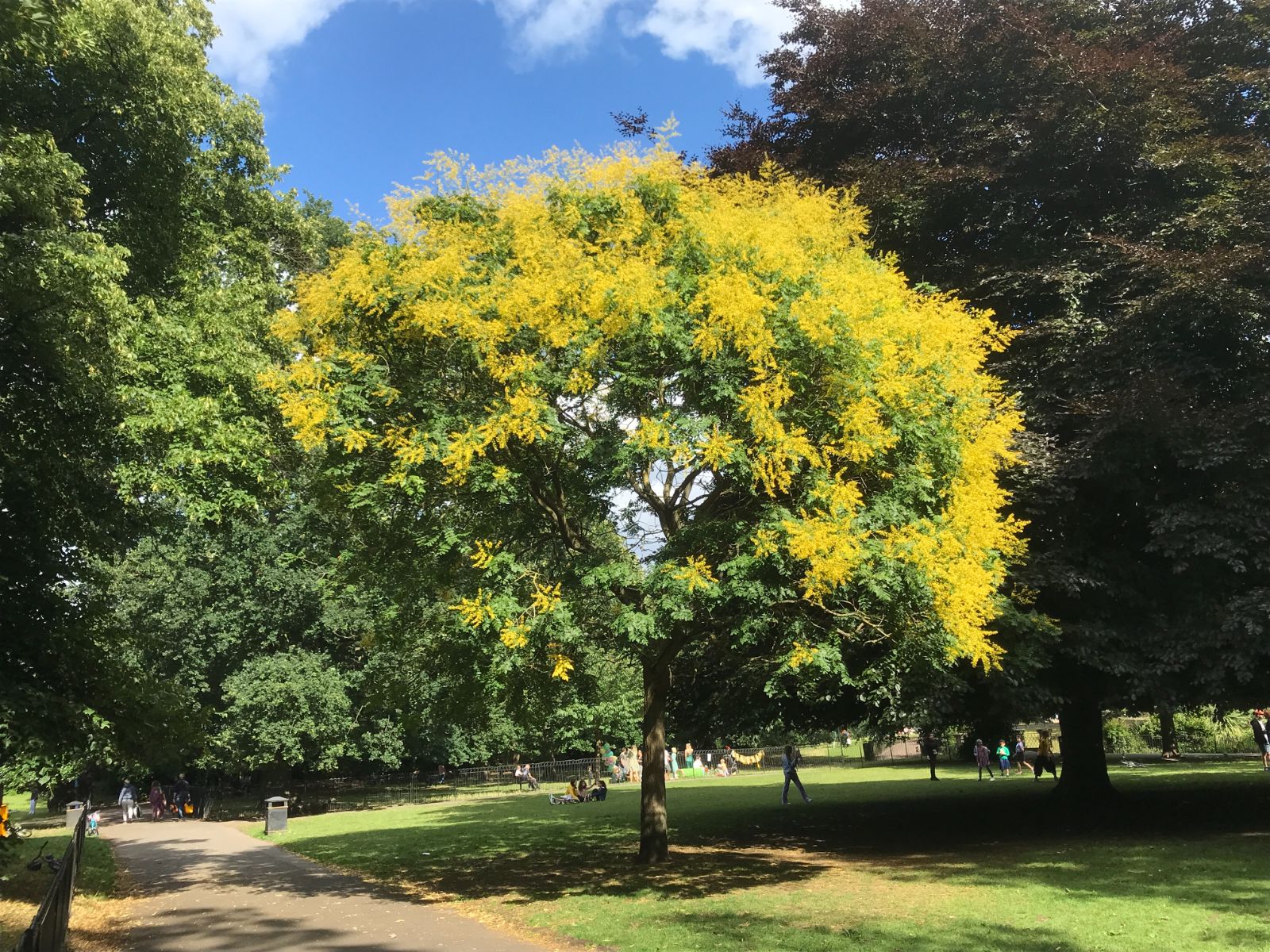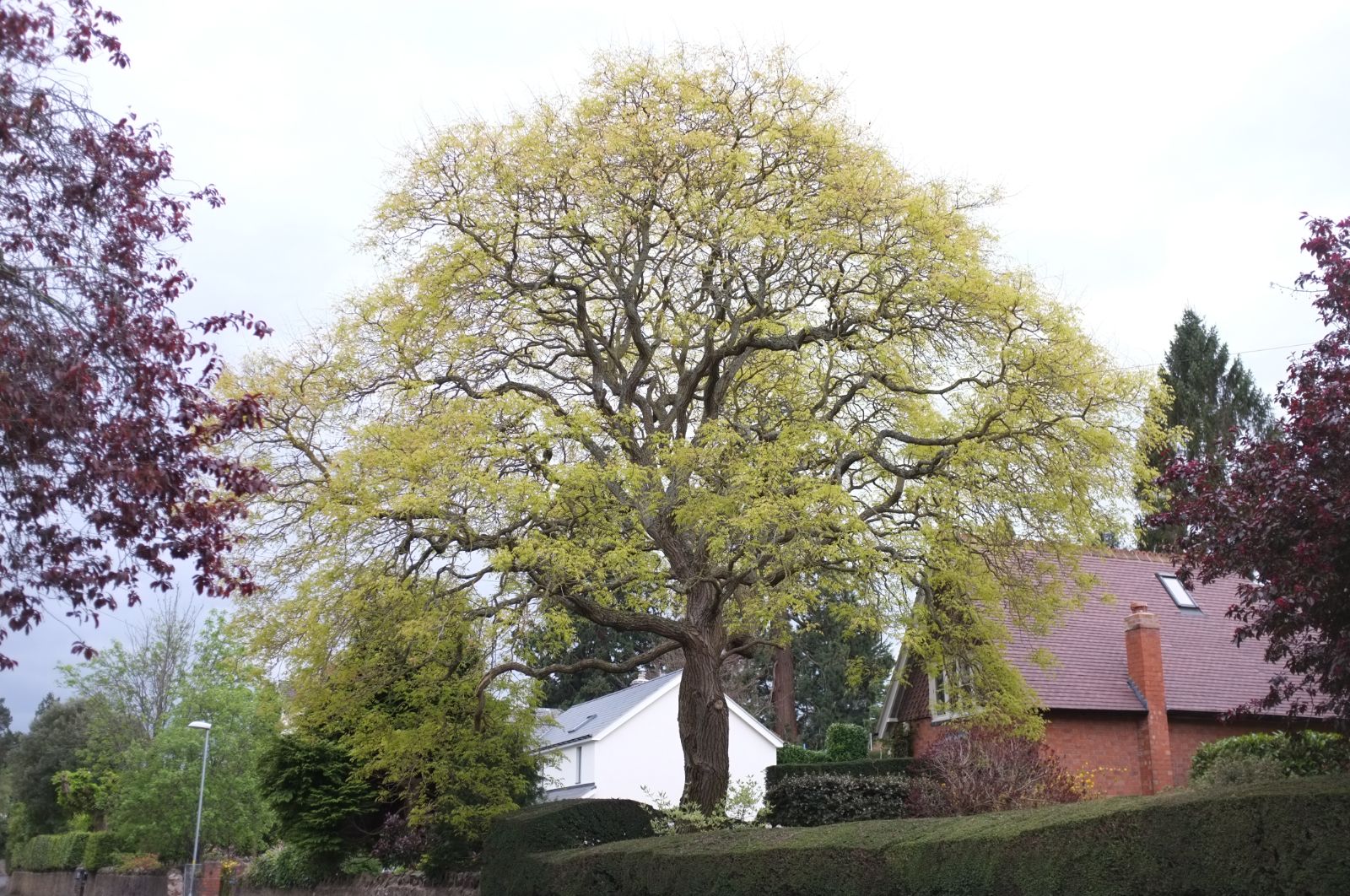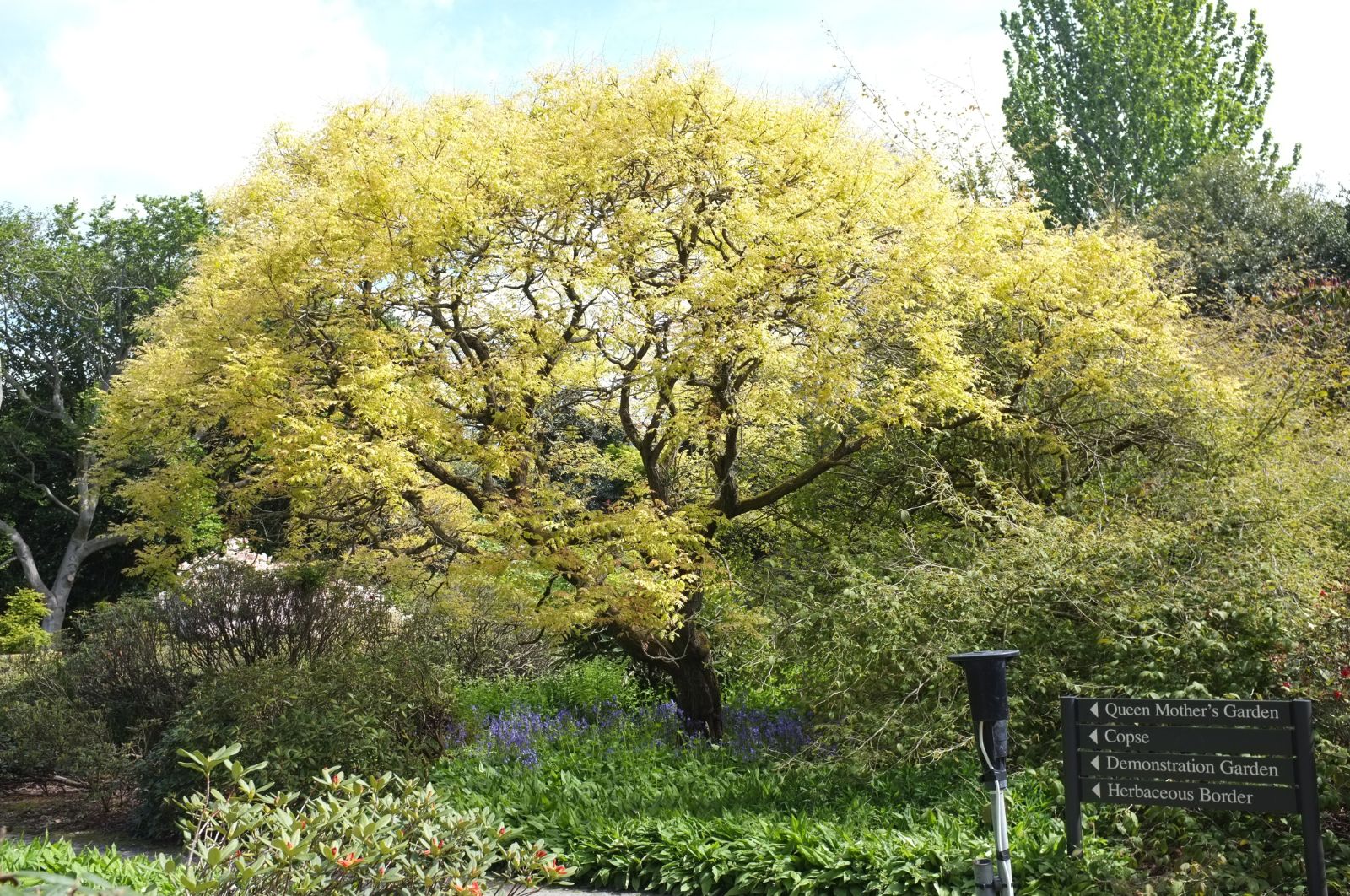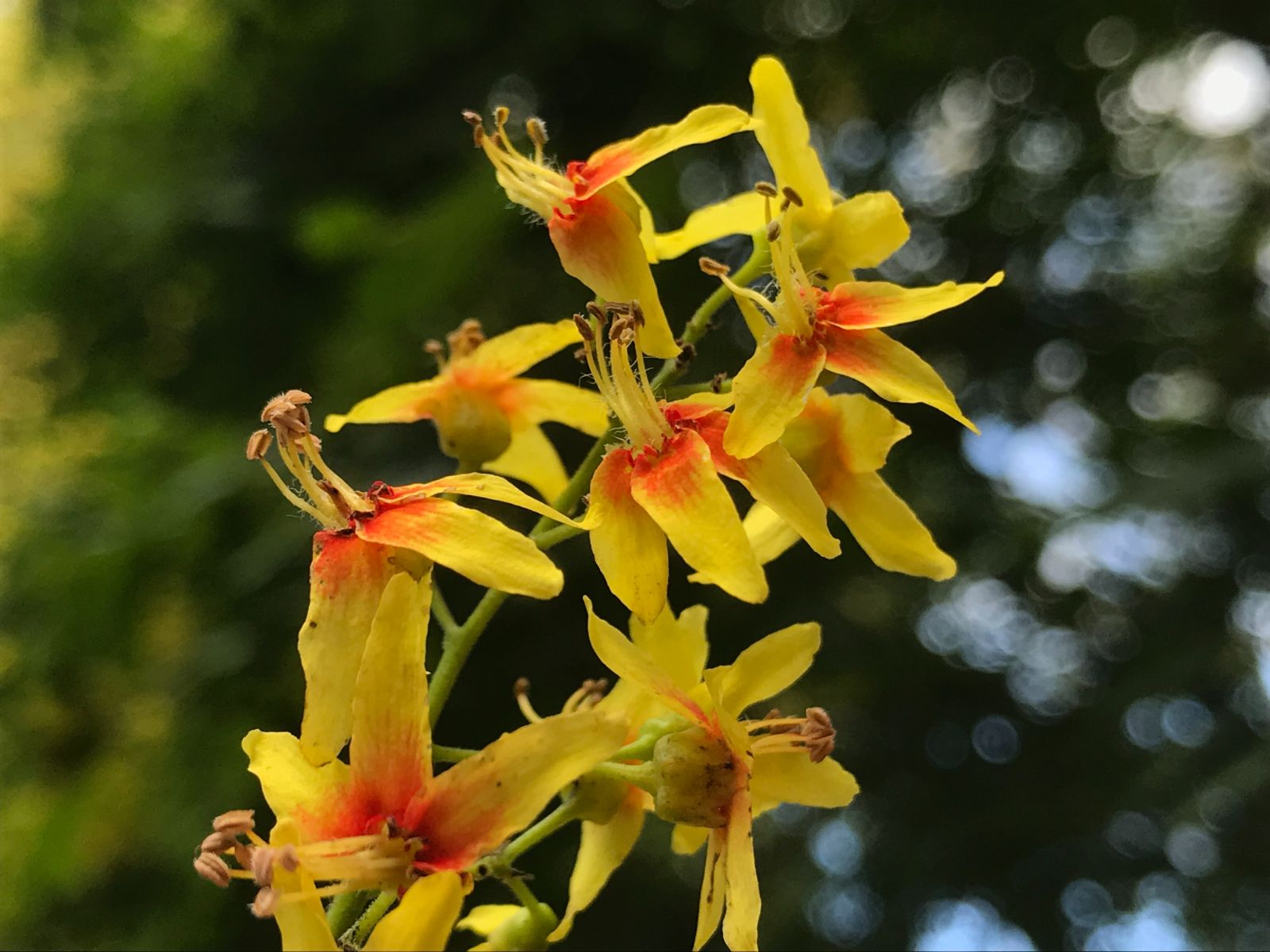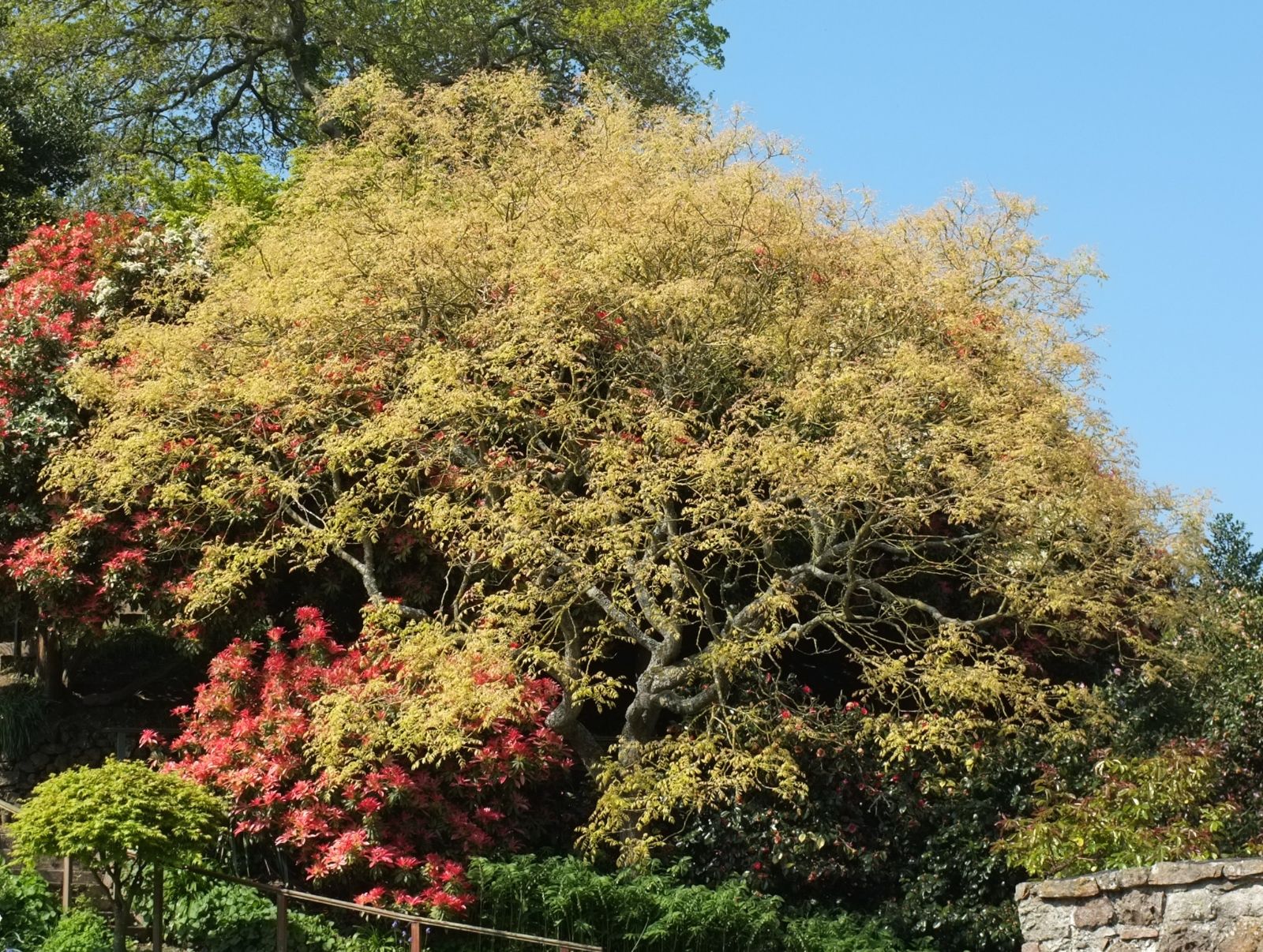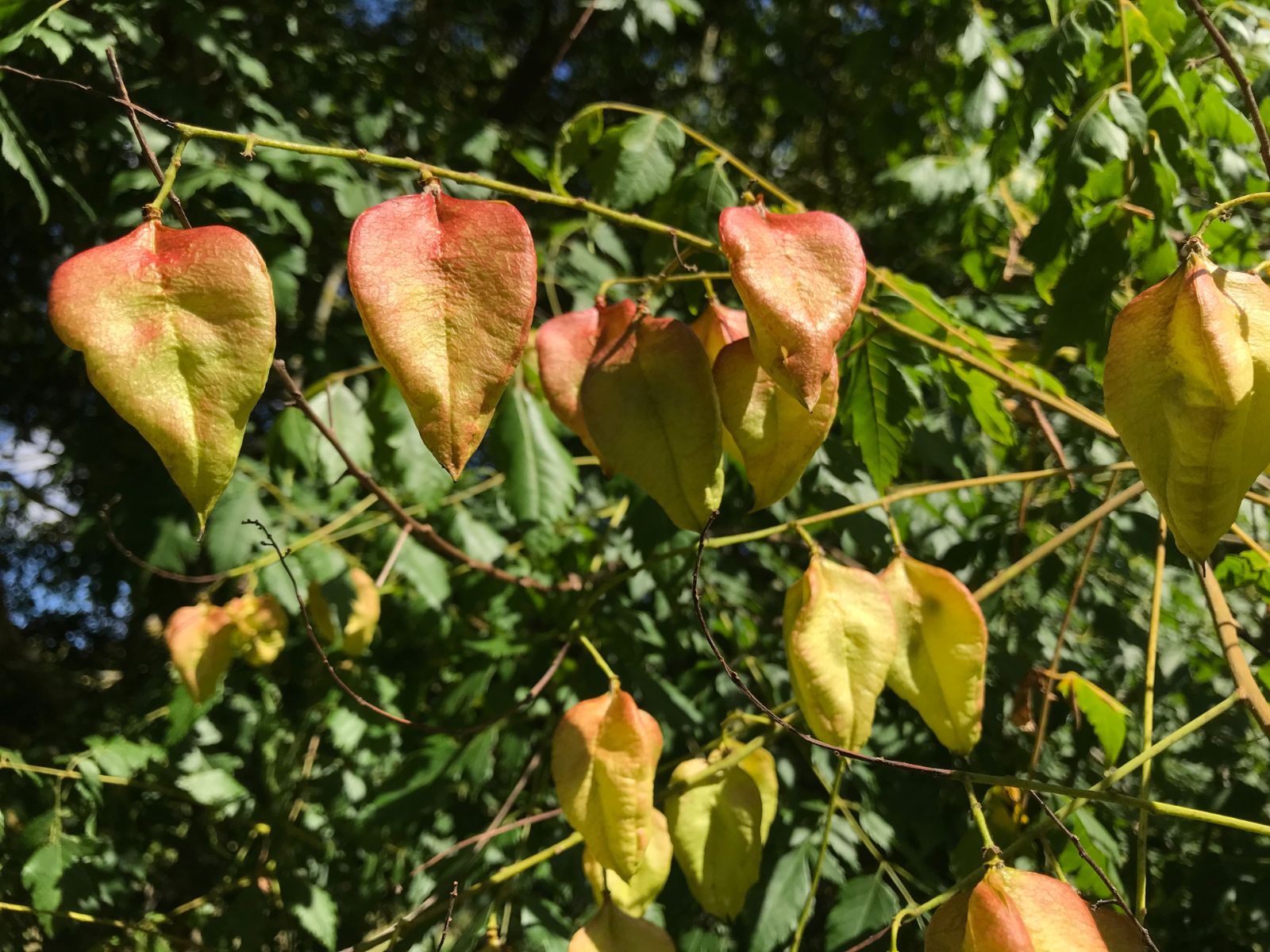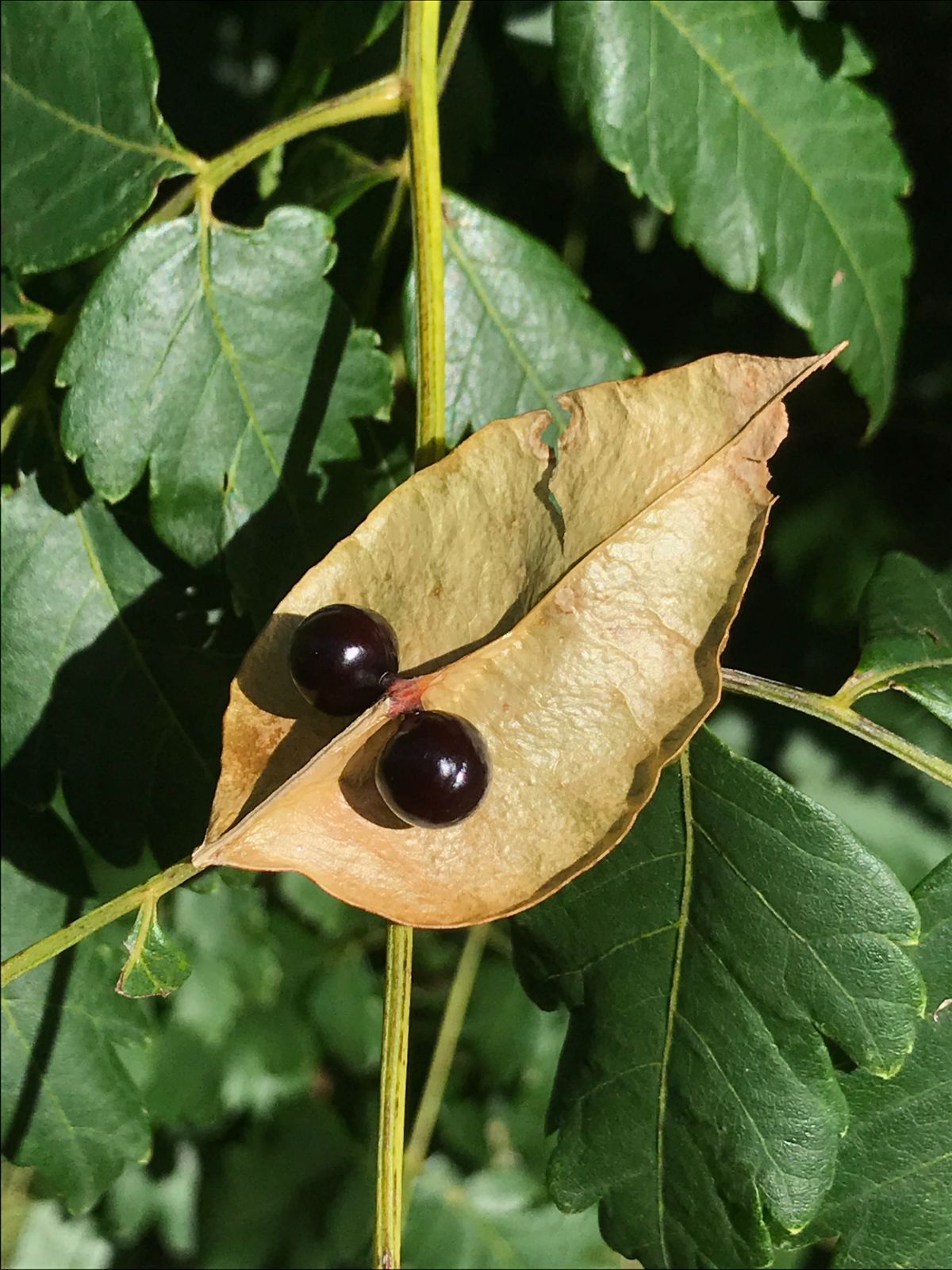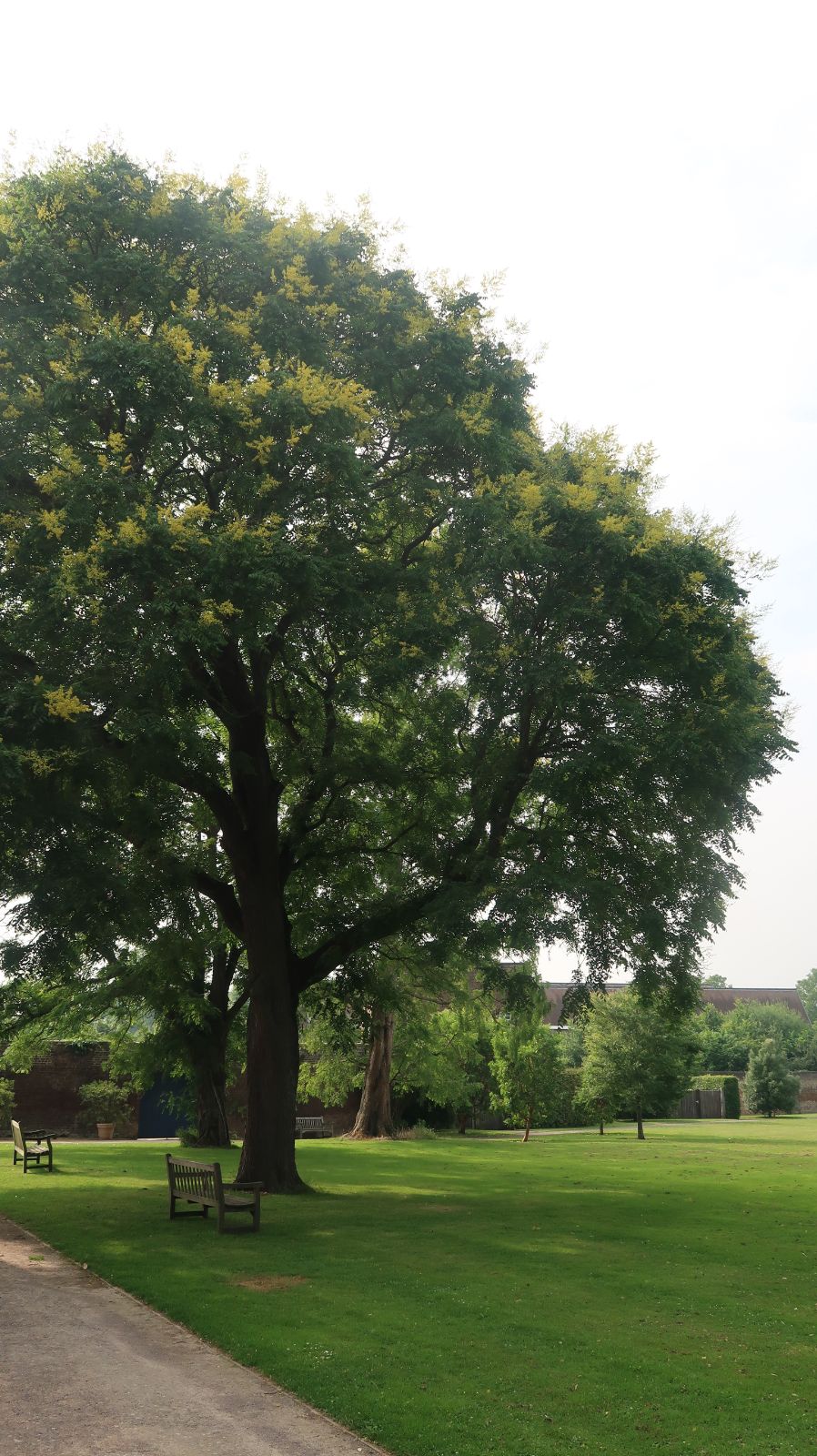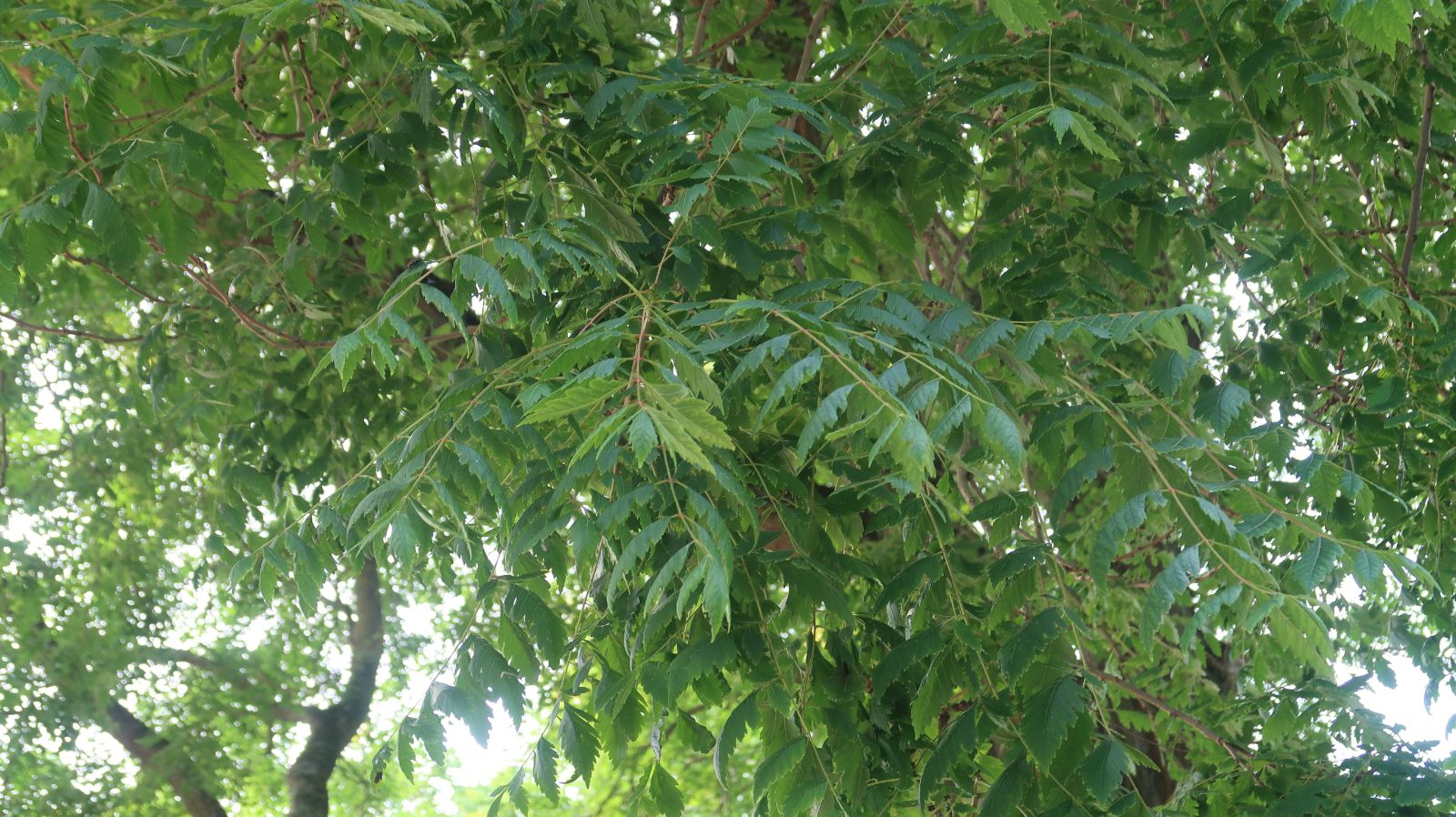Koelreuteria paniculata
Sponsor
Kindly sponsored by
a member of the International Dendrology Society
Credits
Richard Moore (2024)
Recommended citation
Moore, R. (2024), 'Koelreuteria paniculata' from the website Trees and Shrubs Online (treesandshrubsonline.
Genus
Common Names
- Goldenrain Tree
- Pride of India
- China Tree
- Varnish Tree
- Wu-La
- Luan Shu
- Mu Luan
- Hei Se Yeh Shu
- Wu Yeh Kao
- Cha Yeh Chu
- Mogamjunamu
- Chinese Lantern Tree
- Mokugenji
- Lát núi
Synonyms
- Koelreuteria apiculata Rehder & E.H.Wilson
- Koelreuteria bipinnata var. apiculata (Rehder & E.H.Wilson) F.C.How & C.N.Ho
- Koelreuteria chinensis (L.) Hoffmanns.
- Koelreuteria japonica Hassk.
- Koelreuteria paniculata var. apiculata (Rehder & E.H.Wilson) Rehder
- Koelreuteria paniculata var. fastigiata Bean
- Koelreuteria paniculata f. fastigiata (Bean) Rehder
- Koelreuteria paniculata var. lixianensis H.L.Tsiang
- Koelreuteria paniculata f. miyagiensis H.Ohashi & Yu.Sasaki
- Koelreuteria paullinoides L'Hér.
- Paullinia aurea Radlk.
- Sapindus chinensis L.
- Sapindus paniculata (Laxm.) Dum.Cours.
- Sapindus sinensis J.F.Gmel.
Trees up to c. 13 m tall, deciduous, trunk up to c. 50 cm diameter. Mature bark thick gray-brown to black, fissured longitudinally; lenticels gray to dark brown, small; branches tuberculate, glabrous, sometimes appressed pubescent below inflorescence. Leaves grouped on young branches, spreading, pinnate, imperfectly bipinnate, or rarely bipinnate, 25–50 cm long, 10–25 cm wide; rachis glabrous abaxially, lightly pubescent on upper surface; leaflets (7–)11–18, sessile or very shortly petiolate, opposite or alternate, narrowly to broadly ovate to elliptic, (3–)5–10 cm long × 3–6(–7) cm wide, terminal leaflet sometimes fused with neighbouring pair, papery, base cuneate to truncate, slightly oblique, apex acute or acuminate, margins irregularly crenate-serrate to pinnatisect and lobulate, veins faint from above, slightly raised below, adaxially with crispate hairs on midvein, abaxially with long hairs on vein axils, occasionally tomentose, or densely pale yellow pubescent. Inflorescence a thyrse 25–40 cm long and equally wide, densely puberulent, most prominently on distal branches, with scattered glands; pedicels 2.5–5 mm long. Flowers slightly fragrant; calyx lobes 5, ovate, margin glandular ciliate, erose; petals 4, reflexed when flowering, linear-oblong, 5–7(–9) mm long, 1.5–2 mm wide, with basal appendages (scales), villous, yellow at first, changing to orange-red at anthesis, claw 1–2.5 mm long. densely villous with erect, ascending hairs. Stamens 8, 7–9 mm long in staminate flowers, 4–5 mm long in pistilate flowers; filaments densely villous with spreading white hairs mainly on lower half; anthers lavender coloured. Disc oblique, with obtuse lobes. Ovary trigonous, glabrous except on ridges; rudimentary ovary densely hispidulous. Capsules conical, 4–6(–7) cm long, 2.5–3.2 cm wide, valves ovate, apex acuminate; carpels ovoid, abaxially reticulate veined, adaxially smooth and slightly shiny. Styles 3–5 mm long. Seeds almost spherical, 6–7(–8) mm in diameter. Flowering June-August, Fruiting September-October in situ. 2n = 30. (Meyer 1976; Xia & Gadek 2007; Urdampilleta, Ferrucci & Vanzela 2005).
Distribution China Sichuan, Yunnan, Gansu, Shaanxi, Shanxi, Heinan, Hubei, Anhui, Kiangsu, Shandong, Heibei, Beijing, Tianjin, Liaoning North Korea South Korea Vietnam Sơn La
Habitat Dry mountainous river valleys, open forests, rocky mountain slopes and river sides in well drained soils. 0 – 3000 m asl.
USDA Hardiness Zone 5
RHS Hardiness Rating H5
Conservation status Least concern (LC)
Taxonomic note Quite a number of names are now placed in synonymy with Koelreuteria paniculata, which exhibits a high degree of morphological variability across its range. In the past this resulted the naming of several infraspecific taxa; however, with the wealth of herbarium material now available to put this variation into context, it is generally not considered to warrant taxonomic separation, although various forms have been documented from wild-sourced collections such as specimens with finely laciniate leaflets (Dosmann & Whitlow 2006). In cultivation, a number of cultivated forms have been named as cultivars owing to their ornamental value (see below).
The Golden-rain Tree, Koelreuteria paniculata, is one of the most attractive ornamental trees to have been introduced to horticulture. In areas with reliably warm summers it forms an elegant, medium-sized tree producing a wonderful parade of yellow flowers during the middle of summer, followed by an exquisite display of lantern-like fruits, much in-keeping with its oriental origin, yellowish-green at first but soon becoming hued with orange and red as they mature. The show of colour continues even further into late autumn as the change in temperature sets the trees ablaze with the foliage turning incredible shades of yellow, orange and red. With such a rich set of attributes its not hard to see why this species has earned such a high reputation as an ornamental tree, yet it is surprising that they aren’t more commonly planted. Not only is K. paniculata of exceptional ornamental value, it is also extremely versatile and can grow in a range of different soil types, coping very well with drought and unaffected by urban pollution, making it well suited to use as a street tree; it is also tolerant of coastal conditions (Gilman & Watson 1993; Dosmann & Whitlow 2006).
Koelreuteria paniculata is native to Central and Eastern China as far north as Manchuria (Liaoning Province), northern Vietnam and the Korean Peninsula; however, there is some doubt as to whether it is truly a native of Korea, as clearly expressed by Meyer (1976). Numerous populations of K. paniculata are present on both the Korean peninsula and across Japan, although in the latter case it is highly likely that it was introduced from China some time ago. The fact that many old specimens in Japan are found planted around buddhist temples and shrines is one likely sign of its introduction for ornamental or religious reasons. It is also strongly believed by a number of Japanese botanists, such as Dr. Hiroo Kanai of the National Science Museum in Tokyo, that it was probably introduced to Japan following the introduction of Buddhism in 552 AD, later becoming naturalised (Meyer 1976). Meyer also points to a very specific description of the origin of this species in Japan written by Carl Ludwig Blume in 1849 stating that it was “first brought to Japan from a monastery in the Thien tai province of Tschekiang by a wandering monk, in the year 1220, and planted in the garden of a monastery in the city of Mijako [Kyoto]” (Blume 1847) although where Blume obtained this information is unknown (Meyer 1976). Whether K. paniculata is truly native to Korea is less clear, although again many can be found growing in the grounds of Buddhist temples and some populations resemble plantations originally managed by humans. Numerous populations are also found growing in coastal districts of Korea which is quite intriguing; perhaps having dispersed from nearby China across the Yellow Sea? (Dosmann, Whitlow & Ho-Duck 2006). The proximity of North Korean populations to those in Southern Manchuria (Liaoning Province) indicate that its status as a Korean native tree is certainly a possibility and that perhaps a mixture of native and cultivated populations can be found.
In the wild this species can be found growing in dry mountainous river valleys, open forests, rocky mountain slopes and in well-drained riparian soils (Meyer 1976). Although Meyer (1976) stated that Koelreuteria paniculata is found ‘from near sea level to 300 m’ in elevation, after examination of available herbarium specimens this is clearly a misprint and should read up to just over 3000 m, above which altitude George Forrest made a number of collections in 1922, including Forrest 22109 and 21330.
Koelreuteria paniculata was first introduced to Europe by Pierre d’Incarville in 1747 who sent seed of the then-unknown genus from China to St Petersburg where it flowered for the first time in 1771, after which the genus and species were described for the first time the following year (Laxmann 1772; Meyer 1976). The species was apparently first introduced to the UK by the 6th Earl of Coventry in 1763 and cultivated at Croome Court, as recorded by William Aiton (1789), seeds of which are thought to have been obtained from Bernard de Jussieu in Paris or indirectly via contacts at the Royal Botanic Gardens, Kew (Bean 1981; Meyer 1976; Stone et al. 2015). According to Meyer, K. paniculata has been in continuous cultivation at Kew since 1788 (Meyer 1976), with an earlier specimen identified that can be dated back to 1780 which was collected by a Mr Norman of Bromley, Kent. In France this species is likely to have been cultivated since the mid-1700s since D’Incarville had sent seeds to Bernard de Jussieu around the year 1750. The earliest recorded specimen in France was collected by Jean-Baptiste Lamarck and dates back to 1786. Carl Ludwig Willdenow records the species as being cultivated as early as 1796 in Germany (Willdenow 1796) and in the United States it is known to have been cultivated since 1809 when it was recorded by Thomas Jefferson who was sent seeds by Madame de Tesse of France (Meyer 1976).
One of the most notable specimens growing in the UK can be found in the grounds of Syon Park, London. It is the UK and Ireland champion tree for height and girth, at 17 m tall × 81 cm dbh in 2023, 3 m taller than the next tallest known which grows in Abbey Park, Leicester (Tree Register 2024). When in flower, the Syon tree’s golden crown can be seen clearly from outside the gardens, standing proudly next to the glass dome of the Great Conservatory (pictured below). Many other notable specimens are in southern Britain where the summers are warm enough for the species to form substantial trees, but lack of reliable summer heat is clearly limiting. The largest example in Scotland, growing at the Royal Botanic Garden Edinburgh, is an old tree raised from Rock 14994; just 5 m × 41 cm dbh in 2015, despite its age (Tree Register 2024). The Syon tree is on par with some of the largest growing elsewhere, including a tree in the garden at Vigneaux, Bagnères-de-Bigorre, France, 18 m × 78 cm dbh in 2018, and one in the churchyard in Cösitz, Zörbig, Germany, 12 m × 68 cm in 2019.
In China Koelreuteria paniculata enjoys great economic and cultural importance with a wide range of uses. Various parts of the plant have been used in China for religious ceremonies and the species can often be found planted around temples, palaces and in gardens. It was traditionally planted on the graves of high ministers, a relatively high position historically within Chinese society (Meyer 1976; Wang et al. 2013). The species has been used in Chinese Traditional Medicine for the treatment of eye related diseases (Kumar et al. 2011) and recent research has revealed antitumor and antibacterial properties discovered in dry ethanol extracts from the flowers, leaves and stems, with the potential to treat a wide variety of health problems including alzheimer’s disease and cancer. The biologically active substances found within the species also have the potential to be used in food production, providing natural preservatives to extend food shelf-life (Lu et al. 2019; Andonova et al. 2021). In China the flowers of K. paniculata are highly regarded not just for their beauty but as a valuable source of nectar for bees and the buds have traditionally been used as a food source (Lu et al. 2019). The wood is valued for making furniture and as a source of fuel, and dyes can be obtained different parts of the plant with the leaves producing a black dye and the flowers producing a yellow dye. The attractive bead-like seeds are also used to make rosaries for religious purposes and contain oils traditionally used as a lubricant and for soap. An interesting study by Tomić et al. (2020) has shown that the oil-rich seeds of K. paniculata could be used as an effective feedstock for biodiesel production.
It has long been known from experience in the wild and in cultivation that Koelreuteria paniculata is very tolerant of poor soils and of drought conditions; however, a recent study has revealed that K. paniculata is also able to grow in soils contaminated with a range of heavy metals such as Zinc, Manganese, Nickel and Cadmium, and is able to act effectively as an accumulator playing a potentially important role in areas where phytoremediation is required not only by helping to decontaminate soils but also to beautify abandoned mines and other such facilities (Dalun et al. 2009).
Despite its many merits, Koelreuteria paniculata may be viewed as a weed in many areas of Europe and North America where it has become invasive, requiring careful management. In the US this species is currently listed on the National Park Service, Mid-Atlantic Exotic Plant Management Team Invasive Plant list (Andonova et al. 2021; NC State University 2024). In Europe this species has been recorded as seeding abundantly with emerging saplings damaging hardstanding and walls and in areas where saplings are not removed they can cause significant problems and are able reach maturity reasonably quickly, setting further seed. It is a consequence of the species’ ability to tolerate such poor, drought prone growing conditions that it has become a problem in some such areas (Stace 2010; Verloove 2018).
For propagation protocols see the genus article.
The vernacular name Pride of India has long been associated with this tree, despite its absence from that country, but in the course of research for TSO we have been unable to discover when or why this name was bestowed. The earliest record found dates to 1948, demonstrating its use at least in the UK by the mid-twentieth century (Makins 1948 – second edition: the first edition of 1936 has not been seen. If any reader has this available, please check!).
'Beachmaster'
A selection made by the noted American dendrologist J.C. Raulston in the 1990s for its compact habit, to less than 3 m tall and broad after ten years even in the benign climate of the eponymous arboretum in Raleigh, North Carolina (Hatch 2024).
'Caihong'
A cultivar selected in China, originating as a chance seedling of Koelreuteria paniculata ‘Jinye Luan’ (q.v.) with new spring growth flushed pink, the leaves gradually turning yellow-green then finally green in the summer with golden-yellow autumn colour. Propagated by autumn grafting (Yunzhou et al. 2023).
'Coral Sun'PBR
Awards
AGM
A cultivar producing coral-red shoots and pink-flushed foliage in spring, turning a lush green in summer with the stems often retaining their attractive coloration. First discovered by Henny Kolster as a natural mutation from a batch of seedlings grown at his nursery in Boskoop, the Netherlands, in 1993 (Frank P Matthews 2024).
'Fastigiata'
A rare tree of narrowly fastigiate habit whose canopy might remain no more than 1 m broad when the tree is 8 or more metres tall. Being slow growing it can take many years for trees to reach such dimensions. It was raised at Kew from seeds sent from Shanghai by a Miss Corner in 1888 (Bean 1929). Unfortunately, besides being generally slow it can take many decades for trees to develop a dense canopy and even then, like many fastigiate trees, Koelreuteria paniculata ‘Fastigiata’ can have a rather stiff, even gaunt appearance. Some of the best examples in British cultivation grow in London, including the champion growing in the city’s Hanwell Cemetary, 16 m tall × 26 cm dbh in 2022 (Tree Register 2024). It is shy to flower and often the flowers are restricted to the upper crown where they are rarely seen (Hatch 2024). A plant marketed in North America as GOLDEN CANDLE™ (‘Golcanzam’) would seem to be the same mutation.
'JFS Sunleaf'
Synonyms / alternative names
Koelreuteria paniculata SUMMERBURST®
A variety discovered by Sunleaf Nursery, Ohio, selected for its symmetry, heat resistance and improved foliage quality with dark green, glossy leaves (J. Frank Schmidt & Son Co 2023).
'Jinye Luan'
Selected in China, arising from a chance seedling of Koelreuteria paniculata exhibiting golden leaf colour (Guo et al. 2022). ‘Jinluan 2’ and ‘Jinluan 3’ originated as mutant seedlings of K. paniculata ‘Jinye Luan’ producing orange-red young leaves and shoots in spring, the leaves changing to yellow as they mature before darkening to green in summer. The autumn colour is described as ‘isabelline’ (pale grey-yellow) (Chen et al. 2018; Chen, Wang & An 2018).
'Merrist Wood Rainbow'
An unofficially-named sport found in Kew’s records that unfortunately never made it into cultivation. It originated from a chance seedling selected in the 1990’s by nursery propagator Danny O’Shanassy of Merrist Wood Agricultural College, Surrey, UK. This interesting sport had variegated foliage with white and pink markings but is noted as being susceptible to sun scorch and of low vigour (RM pers. obs.).
'Rose Lantern'
Often confused with Koelreuteria paniculata ‘September’, whose lanterns are never as vividly coloured as this selection, ‘Rose Lantern’ has a particularly interesting history. The two cultivars share the same origin which is probably the source of the confusion and why some consider them synonymous. The story begins in 1968 when the Arnold Arboretum received a batch of sixteen root cuttings from the United States National Arboretum labelled ‘K. paniculata – Special’ from a group of unusually late flowering specimens named the following year as ‘September’ Of the sixteen root cuttings one survived and a softwood cutting was taken from it, making two genetically identical specimens which were later planted in the arboretum in a prominent location on the edge of Bussey Hill Road. On a visit to the Arnold in the autumn of 1994 Frank Santamour Jr noticed these two Golden-rain trees, still labelled ‘September’ but with especially rosy-red capsules (accessions AA 577–66 and 771–68). To check the identity of these specimens electrophoretic analyses of the cambial tissues were conducted; these tests found that the trees’ enzyme profiles differed from that of ‘September’. It has been hypothesised that the unusual rosy-red pigmentation of the fruit capsules is a result of a rare somatic mutation occuring in the root section that developed into the original specimen grown at the Arnold Arboretum. Subsequently the material was successfully propagated via root and softwood cuttings and named ‘Rose Lantern’, however it remains uncommon in cultivation and is rarely available commercially (Santamour Jr & Spongberg 1996).
'September'
A late flowering variety first discovered in cultivation by Dr J.C. McDaniel of the Horticulture Department at the University of Illinois in 1958 from a group of unusually late flowering specimens from which seedlings were raised, maintaining the late flowering habit of their parents. ‘September’ was first officially described and published in 1967 (Meyer 1976; Santamour Jr & Spongberg 1996).
'Variegata'
This rare cultivar was first recorded by Elwes & Henry (1913) as having originated from Major Alcock Beck of Easthwaite Lodge at Hawkside, Ambleside (Cumbria, UK) from where a branch with varietgated leaves was sent to Kew in 1885. This variety remains very rare in cultivation and is not often available from nurseries; a specimen was sold at the Kew Guild’s Annual Plant Auction in June 1996 for £130, apparently having only been recently rediscovered in the north of England (Bennett 1997). There is a fine tree at the University of Dundee Botanic Garden in the UK, which although not specifically labelled ‘Variegata’ is evenly covered in prettily variegated foliage without any signs of reversion (T. Christian pers. comm. 2024 and see images).
‘Merrist Wood Rainbow’ is another variegated clone whose name may be found in Kew’s records, but unfortunately this never made it into commerce and it may now be extinct. It originated as a chance seedling selected in the 1990s by nursery propagator Danny O’Shanassy of Merrist Wood Agricultural College, UK. This interesting sport had variegated foliage with white and pink markings but is noted as being susceptible to sun scorch and of low vigour (RM pers. obs.).

